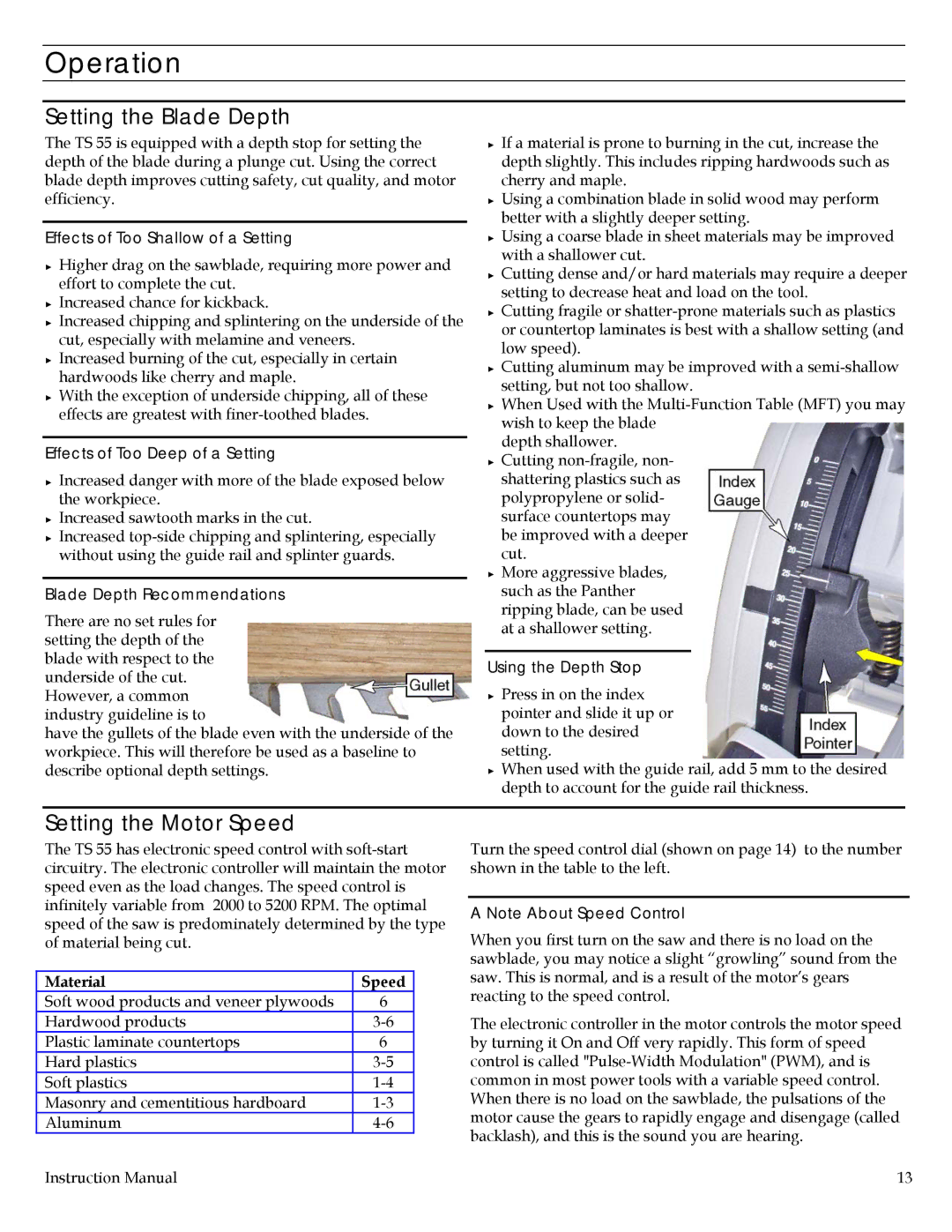
Operation
Setting the Blade Depth
The TS 55 is equipped with a depth stop for setting the depth of the blade during a plunge cut. Using the correct blade depth improves cutting safety, cut quality, and motor efficiency.
Effects of Too Shallow of a Setting
►Higher drag on the sawblade, requiring more power and effort to complete the cut.
►Increased chance for kickback.
►Increased chipping and splintering on the underside of the cut, especially with melamine and veneers.
►Increased burning of the cut, especially in certain hardwoods like cherry and maple.
►With the exception of underside chipping, all of these effects are greatest with
Effects of Too Deep of a Setting
►Increased danger with more of the blade exposed below the workpiece.
►Increased sawtooth marks in the cut.
►Increased
Blade Depth Recommendations
There are no set rules for setting the depth of the blade with respect to the underside of the cut. However, a common industry guideline is to
have the gullets of the blade even with the underside of the workpiece. This will therefore be used as a baseline to describe optional depth settings.
►If a material is prone to burning in the cut, increase the depth slightly. This includes ripping hardwoods such as cherry and maple.
►Using a combination blade in solid wood may perform better with a slightly deeper setting.
►Using a coarse blade in sheet materials may be improved with a shallower cut.
►Cutting dense and/or hard materials may require a deeper setting to decrease heat and load on the tool.
►Cutting fragile or
►Cutting aluminum may be improved with a
►When Used with the
depth shallower.
►Cutting
►More aggressive blades, such as the Panther ripping blade, can be used at a shallower setting.
Using the Depth Stop
►Press in on the index pointer and slide it up or down to the desired setting.
►When used with the guide rail, add 5 mm to the desired depth to account for the guide rail thickness.
Setting the Motor Speed
The TS 55 has electronic speed control with
Material | Speed |
Soft wood products and veneer plywoods | 6 |
Hardwood products | |
Plastic laminate countertops | 6 |
Hard plastics | |
Soft plastics | |
Masonry and cementitious hardboard | |
Aluminum |
Instruction Manual
Turn the speed control dial (shown on page 14) to the number shown in the table to the left.
A Note About Speed Control
When you first turn on the saw and there is no load on the sawblade, you may notice a slight “growling” sound from the saw. This is normal, and is a result of the motor’s gears reacting to the speed control.
The electronic controller in the motor controls the motor speed by turning it On and Off very rapidly. This form of speed control is called
13
